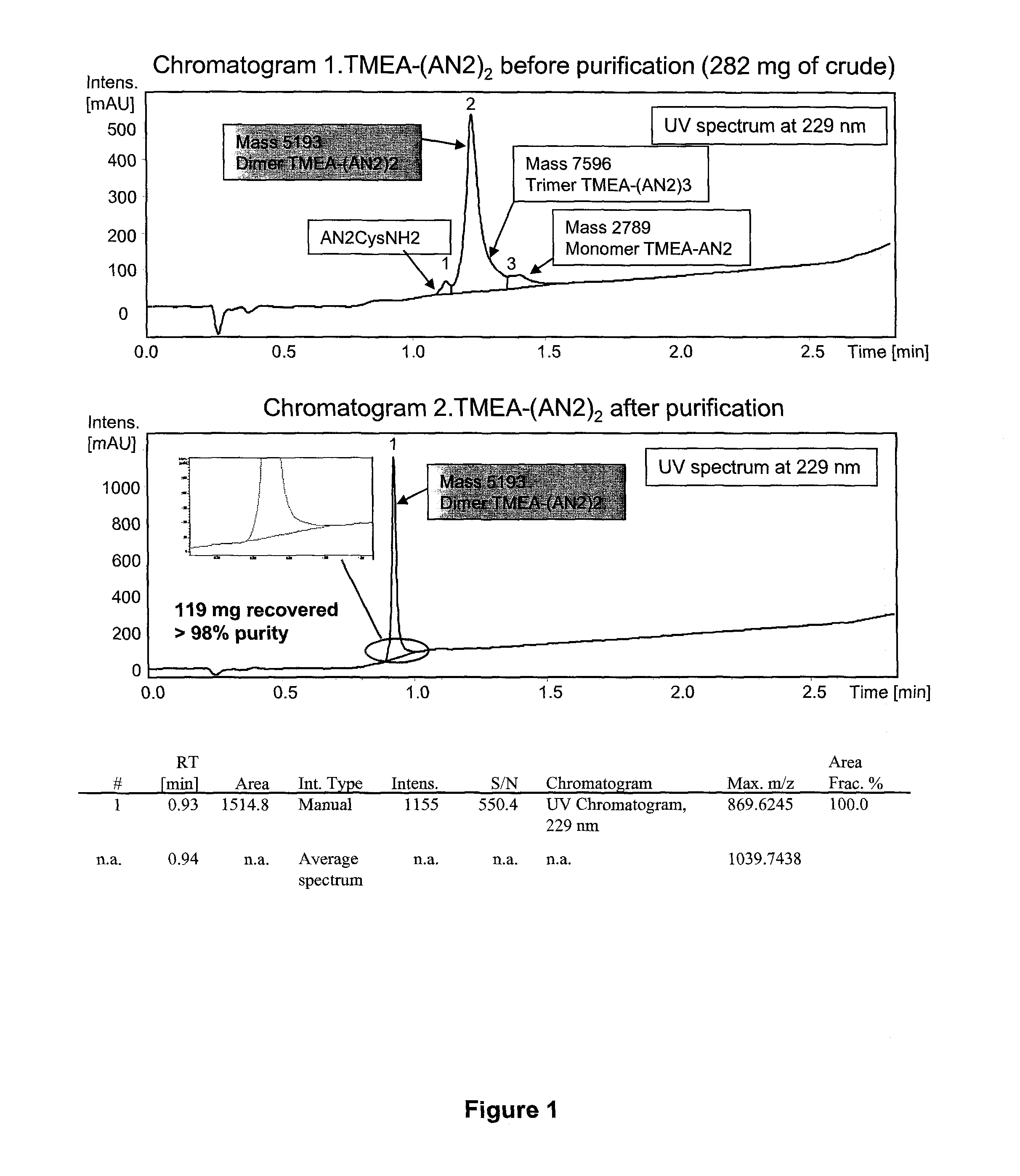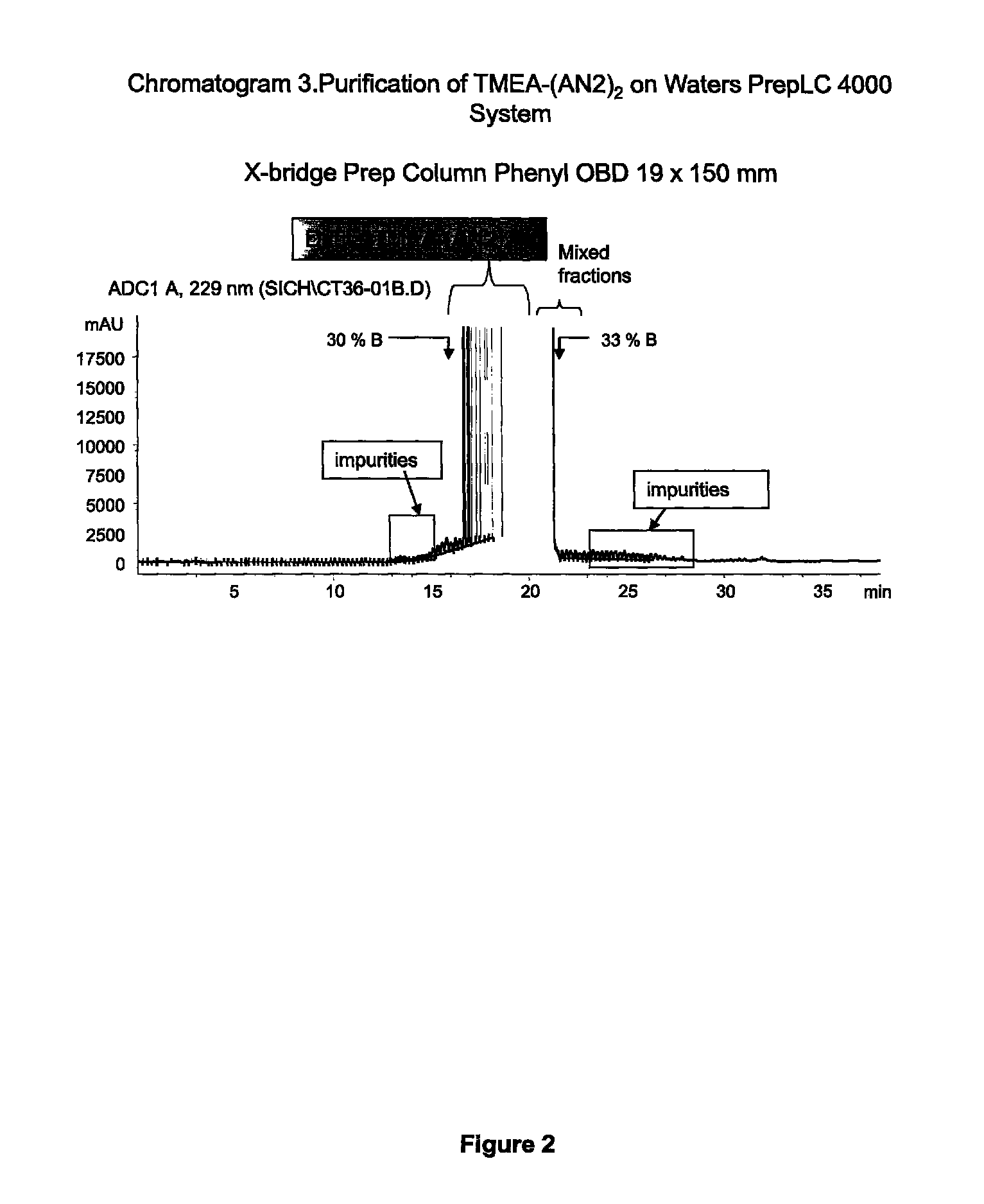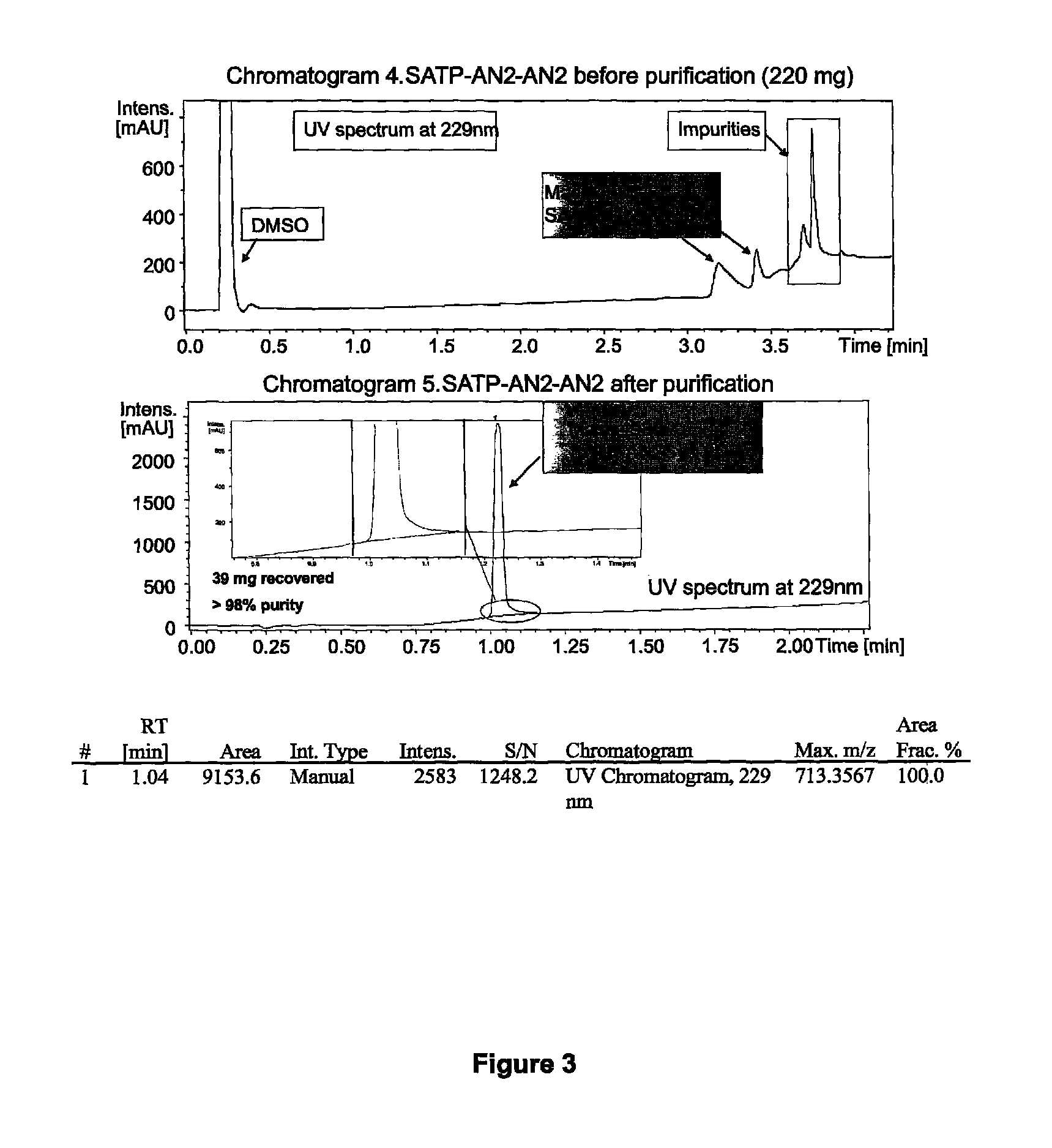Multimeric peptide conjugates and uses thereof
a multi-mer, conjugate technology, applied in the direction of peptide sources, antibody medical ingredients, metabolic disorders, etc., can solve the problems of brain disease treatment can be impaired, and achieve the effect of enhancing efficiency and enhancing efficiency of transport across the bbb or into particular cell types
- Summary
- Abstract
- Description
- Claims
- Application Information
AI Technical Summary
Benefits of technology
Problems solved by technology
Method used
Image
Examples
example 1
Synthesis of Dimeric Angiopep-2 Using a TMEA Linker
[0320]The following scheme was used produce a dimeric form of Angiopep-2 joined by a TMEA linker.
[0321]
[0322]C-terminally amidated Angiopep-2 with an additional C-terminal cysteine (Angiopep-2-Cys; SEQ ID NO:114) (264.2 mg, 109.9 umol, 2.4 eq.) was dissolved in urea 8 M (18 ml). This solution was added dropwise to a solution of TMEA (tris-(2-maleimidoethyl)amine) (Pierce Biotechnology) (17.7 mg, 45.8 umol, 1 eq. in 9 ml of urea 8 M). Monitoring of the reaction was done using the analytical methods 1 and 2 (which are described in chromatograms 1-2 of FIG. 1). The reaction (1.7 mM, pH 8.53) allowed to proceed at room temperature for 1 hour, and the mixture was purified by RP-HPLC chromatography (Waters PrepLC 4000; see chromatogram 3, Table 5).
[0323]
TABLE 5PurificationColumn Flow Rate Time (min)Volume (C.V.)(ml / min)% Solvent B0.000.0013.0020.05.121.5213.0020.028.757.0113.0040.0 (over 23.63 min)33.301.3513.0095.0 (over 4.6 min)38.001.3...
example 2
Synthesis of Dimeric Angiopep-2
[0330]The following synthetic scheme was used to produce dimeric Angiopep-2 having an SATP linker.
[0331]
[0332]Angiopep-2-Cys-NH2 (H-TFFYGGSRGKRNNFKTEEYC-NH2; SEQ ID NO:114) was synthesized using solid phase peptide synthesis (SPPS). G6S7 is coupled using pseudoproline dipeptide GS to optimize the synthesis. SPPS was carried out on a Protein Technologies, Inc. Symphony® peptide synthesizer using Fmoc (9-fluorenylmethyloxycarbonyl)amino-terminus protection. Angiopep-2-Cys-NH2 (H-TFFYGGSRGKRNNFKTEECY-NH2; SEQ ID NO:114) was synthesized on a 100-μmol scale using a 5-fold excess of Fmoc-amino acids (200 mM) relative to the resin. Coupling was performed from a Rink amide MBHA resin (with Nle) (0.40 mmol / g) for carboxyl-terminus amides using 1:1:2 amino acid / activator / NMM in DMF with HCTU (2-(1H-6-chlorobenzotriazol-1-yl)-1,1,3,3-tetramethyluronium hexafluorophosphate) and NMM (N-methylmorpholine). Deprotection was carried out using 20% piperidine / DMF.
[0333]R...
example 3
Synthesis of an Angiopep-1 Dimer Using a Disulfide Bond
[0346]An Angiopep-1 dimer was prepared by incubating the Angiopep-1 peptide (SEQ ID NO:67) at 37° C. for 2 hours in phosphate buffered saline (PBS) at pH 8.5. This reaction resulted in formation of Angiopep-1 dimers joined by a disulfide bond through the cysteine amino acid on each protein (FIG. 5).
[0347]Volume of brain parenchymal distribution was measured using the in situ brain perfusion assay (FIG. 6). Great uptake volumes using the Angiopep-1 dimer were observed, especially at lower concentrations, as compared to monomeric Angiopep-2. Parenchymal uptake of the Angiopep-1 dimer and Angiopep-2 was also measured at various concentrations in situ (FIG. 7). Here, the Angiopep-1 dimer, especially at lower concentrations (<500 nmol), exhibited higher transport than the Angiopep-2 monomer.
PUM
 Login to View More
Login to View More Abstract
Description
Claims
Application Information
 Login to View More
Login to View More - R&D
- Intellectual Property
- Life Sciences
- Materials
- Tech Scout
- Unparalleled Data Quality
- Higher Quality Content
- 60% Fewer Hallucinations
Browse by: Latest US Patents, China's latest patents, Technical Efficacy Thesaurus, Application Domain, Technology Topic, Popular Technical Reports.
© 2025 PatSnap. All rights reserved.Legal|Privacy policy|Modern Slavery Act Transparency Statement|Sitemap|About US| Contact US: help@patsnap.com



